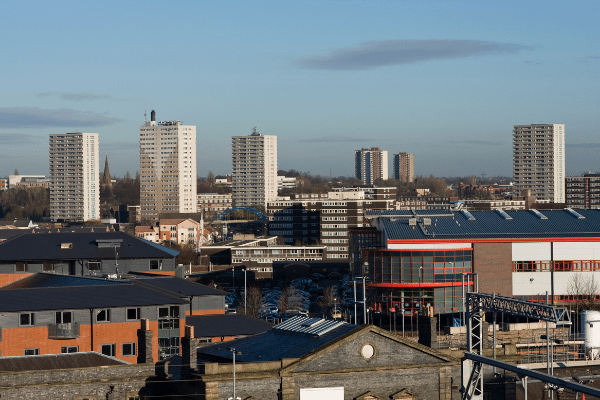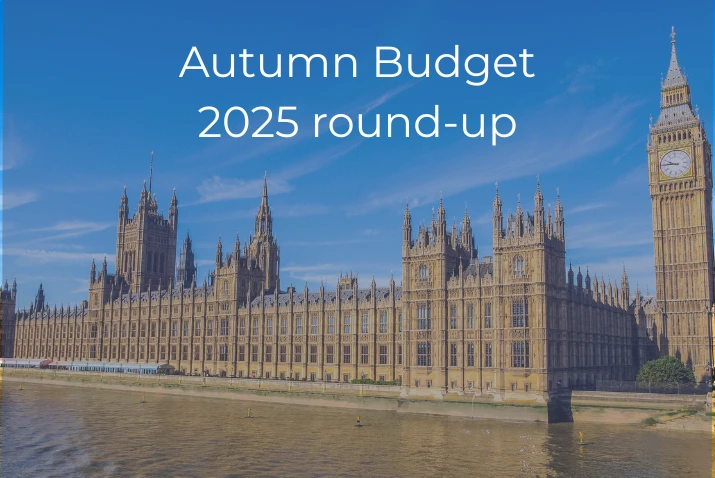The Levelling Up white paper has been billed as a plan that will “transform the UK by spreading opportunity and prosperity to all parts of it.” So, what exactly is the plan and how will it impact buyers, sellers, contract holders and landlords?
Essentially, the Government is promising a fairer balance of investment across the whole country and is pledging that, by 2030, they will “boost productivity, pay, jobs and living standards by growing the private sector, especially in those places where they are lagging.”
The reason for the need to level up across the country, according to the report, is that there are larger geographical differences in the UK than in many other developed countries. It states that “urban areas and coastal towns suffer disproportionately from crime”, while “places with particularly high levels of deprivation, such as former mining communities, outlying urban estates and seaside towns, have the highest levels of community need and poor opportunities for the people who grow up there.”
The reason for the need to level up across the country, according to the report, is that there are larger geographical differences in the UK than in many other developed countries.

It states that “urban areas and coastal towns suffer disproportionately from crime”, while “places with particularly high levels of deprivation, such as former mining communities, outlying urban estates and seaside towns, have the highest levels of community need and poor opportunities for the people who grow up there.”
But what does ‘levelling up’ really mean?
Levelling up means raising standards of living in the poorest parts of the UK and helping people in those communities enjoy a better quality of life. The Government is promising a lot of money to be invested by local leaders in their area, although some critics are claiming that much of this isn’t actually ‘new’ money – it’s funding that had already been promised. However, levelling up secretary, Michael Gove, maintains that it’s coming from the “huge cheque” the Chancellor gave the Department for Levelling Up, Housing and Communities (DLUHC) in the last spending review.
Regardless of whether the money is technically ‘new’ or not, the aim is to invest it across the country to improve areas along the lines of six key factors:
- Physical capital – infrastructure, machines and housing
- Human capital – the skills, health and experience of the workforce
- Intangible capital – innovation, ideas and patents
- Financial capital – resources supporting the financing of companies
- Social capital – the strength of communities, relationships and trust
- Institutional capital – local leadership, capacity and capability.
This is perhaps where the plan is different to what we have seen in the past. For instance, successive governments have often been accused of not having a holistic plan to house people – they’ve focused on creating individual policies, which have unintended consequences. One example is providing support for first time buyers, while at the same time penalising landlords with increased costs and higher taxes. That’s led to a smaller choice of properties and potentially higher rents for contract holders, making it harder to save for a deposit.
The second part of this plan is the aim to ensure that decisions are made at a local level, not from Westminster. Hopefully this will result in the money being better invested, in ways that local leaders believe will make a real difference in their own areas.
The Government is also looking to relocate civil service roles out of London. For example, over 2,000 roles in the Ministry of Justice (MoJ) are being moved into 7 new regional offices being opened in Leeds, Liverpool, Nottingham, South Tyneside, Cardiff, Ipswich and Brighton.

Is the levelling up plan good or bad news for the property market?
Overall, this levelling up plan is good news for the housing market. Firstly, there are 20 towns and cities that have been prioritised to receive funds for regeneration, and that includes more investment in housing at a local level.
For example, there is a plan to revive Wolverhampton, which will become home to a new headquarters for the DHULC. And in Sheffield, there are plans to create better transport, including being able to get to London in just 87 minutes.
More investment, better transport and improved communities will always help to maintain and increase house prices and rents – so for those already in a home, this should help support its value into the future.
The other 18 areas highlighted for priority investment are:
- Aberdeen
- Glasgow
- Edinburgh
- N. Ireland
- West and South Yorkshire
- Stoke and Staffordshire
- Nottingham and Derby
- Leicestershire
- West Midlands
- Bristol to Swansea
- Thames Estuary
- North East
- Tees Valley
- Menai-Mersey-Dee
- Humber Estuary
- East Anglia
- Solent
- Exeter M5 Growth
But the plans aim to go much further. As well as building more affordable social housing, there will be continued investment into Government schemes that help people onto the housing ladder through supporting buyers with small deposits.
For those renting, the plan confirms the Government’s commitment to end Section 21 ‘no fault’ evictions and introduce a National Landlord Register. However, it goes one step further by promising renters that by 2030 “the number of non-decent rented homes [will] have fallen by 50% with the biggest improvements in the lowest performing areas” – and the intention is to bind the current ‘decent homes standards’ to the private sector, not just social housing.
And for those wanting to buy and sell a home in the future, the Government pledges that it will work with the industry to provide more information at the start of the process, to reduce the number of sales that fall through after an offer has been accepted.
If the Government is successful in achieving their key promises by 2030 – which also include delivering increased pay, higher employment and better public transport – this levelling up plan should certainly help maintain and boost the housing market for everyone.
If you’re looking to invest in property or get on the housing ladder, the next step is to really understand the impact the levelling up plan is going to have in your own area. So, speak to your local office, check local news, and talk to the council to find out how the latest proposals might impact where and what you buy.








